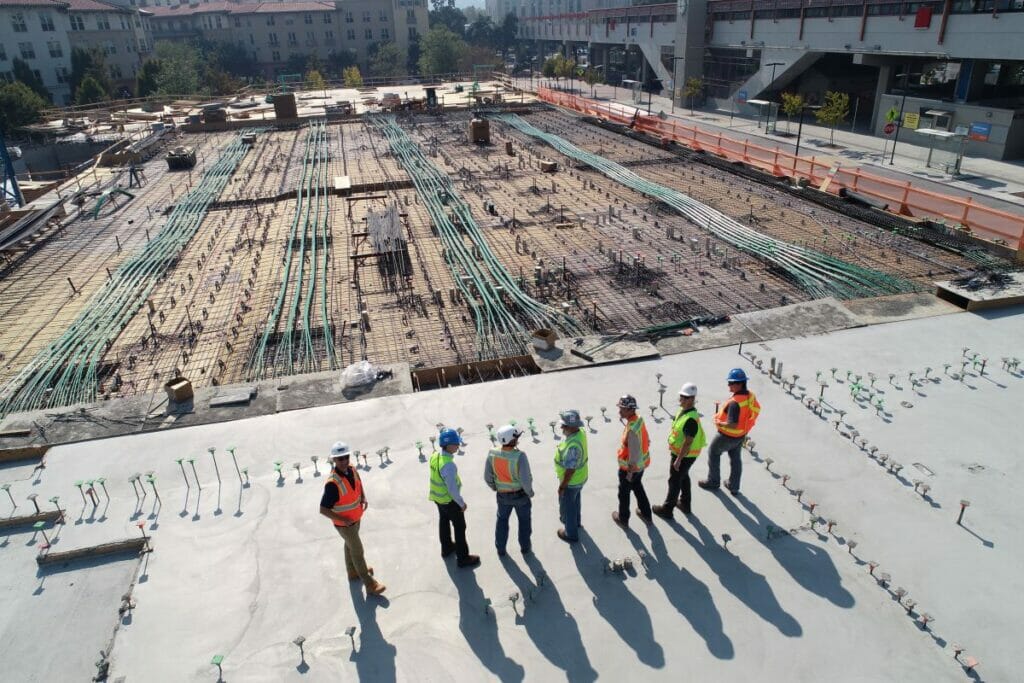How to Finance Your Next Real Estate Development Project
Financing is the lifeblood of any real estate development project. Without the necessary funds, even the most promising development can stall before it begins. Real estate development and construction almost always requires a blend of debt and equity financing, tailored to the project’s unique needs and risks. The type of financing chosen can significantly impact the project’s profitability, cash flow, and rate of return.
A developer must understand the various financing options available and how to navigate the complex landscape of real estate project finance. This article provides a comprehensive overview of financing real estate development, from the types of financing available to best practices in securing funds. Let’s delve into the intricacies of financing your next real estate venture.
Types of Debt and Equity Development Financing
Real estate development projects generally rely on a mix of debt and equity financing. Each financing type has its own set of advantages, costs, and implications. The choice between debt and equity, or a combination of both, depends on the project’s stage of development, risk profile, and the developer’s financial strategy. Understanding the development process and the associated financing options is crucial for any real estate developer. Let’s explore the various types of debt and equity development financing.
Traditional Financing
Traditional financing typically refers to bank loans provided by financial institutions. These loans are often secured against the property, requiring the developer to provide collateral. The repayment terms, interest rates, and loan duration are negotiated between the lender and the developer. Traditional financing is often used in the early stages of a project, especially during land acquisition.
However, banks usually require a detailed business plan, feasibility studies, and due diligence before approving the loan. While this type of financing is commonly used, it’s essential for developers to understand the terms and conditions, as defaulting can lead to the loss of the property. Traditional financing remains a cornerstone for many real estate development projects.
Syndicated Financing
Syndicated financing involves multiple lenders coming together to provide a single loan to a developer. This approach is often used for large-scale real estate development projects where the funding requirement exceeds the capacity of a single lender. The syndicate, usually led by a lead bank, divides the loan into parts, with each lender contributing a portion. This spreads the risk among the participating lenders.
Syndicated financing can provide developers with access to larger sums of money than might be available from a single source. However, the process can be complex, requiring coordination among various lenders and adherence to a common set of terms and conditions. Developers considering syndicated financing should be prepared for rigorous due diligence and scrutiny from multiple lenders.
Crowdfunding
Crowdfunding has emerged as a modern method of financing real estate development projects. It involves raising small amounts of money from a large number of people, typically via online platforms. Both accredited and non-accredited investors can invest in projects, allowing developers to tap into a broader pool of potential funders.
Crowdfunding platforms often allow investors to acquire a piece of the project, either as debt or equity. This democratizes real estate investment, enabling individuals to invest in projects that were previously accessible only to large investors or institutions. However, developers need to be transparent, providing detailed project information and updates to maintain investor trust. While crowdfunding offers a new avenue for financing, it also requires developers to be proactive in communication and project management.
Sponsor Equity
Sponsor equity refers to the capital investment made by the developer or the project’s general partner. It’s the developer’s skin in the game, demonstrating commitment and confidence in the project’s success. This equity is usually the first to be at risk and may get paid out after other capital sources, such as debt providers or preferred equity investors.
However, sponsor equity also stands to gain the most if the project is successful, as it often commands a higher return on investment. It’s a crucial piece of the capital stack, often leveraged to secure additional financing. Lenders and equity investors view sponsor equity as a sign of the developer’s commitment, making it easier to obtain financing. For developers, it’s a balance between risk and potential reward, as they stand to lose the most if something goes wrong but also gain the most if the project succeeds.
Joint Venture (JV)
A joint venture (JV) is a partnership between a developer and another party, often real estate investors or another developer, to share the costs, risks, and rewards of a real estate development project. JVs are common in the real estate industry, especially for large projects or when specialized expertise is required. Each party brings something to the table, whether it’s capital, land, or development expertise. The terms of the JV, including profit-sharing, responsibilities, and exit strategies, are outlined in a joint venture agreement.
JVs allow developers to undertake projects that might be beyond their individual capacity, spreading the risk and leveraging the strengths of each partner. However, successful JVs require clear communication, aligned objectives, and trust between the parties. Developers considering a JV should ensure that the partnership’s terms are clear and that both parties’ roles and expectations are well-defined.
Mezzanine Debt
Mezzanine debt occupies a middle ground between senior debt and equity in the capital stack of a real estate development project. It’s typically a loan that can be converted into equity if the borrower defaults. Mezzanine debt carries a higher interest rate than senior debt, reflecting its higher risk. However, it’s subordinate to senior debt, meaning in the event of a default, senior debt is repaid first.
For developers, mezzanine debt can bridge the funding gap between senior debt and equity, allowing them to undertake larger projects. Lenders, often private equity firms or hedge funds, are attracted to mezzanine debt for its higher returns. However, developers should approach this type of financing with caution, understanding the terms and the associated risks.
SBA Loans
The Small Business Administration (SBA) offers loans designed to help small businesses, including real estate developers, obtain financing. These loans are not directly provided by the SBA but are facilitated by it, with the SBA guaranteeing a portion of the loan. This guarantee reduces the risk for lenders, making them more inclined to lend to small businesses. SBA real estate loans come with competitive interest rates and longer repayment terms, making them attractive for small real estate developers.
However, there are specific eligibility criteria, and the application process can be rigorous. Developers considering SBA loans should familiarize themselves with the requirements and be prepared for a thorough review. While SBA loans offer an avenue for financing, they are best suited for smaller projects or developers who meet the specific criteria.

STEPS IN Financing Real Estate Development ProjectS
Financing a real estate development project is a phased process, aligning with the project’s lifecycle. Each stage of development has its own financing needs and challenges. From the initial seed capital to land acquisition and construction, the financing strategy evolves. Understanding these stages and the associated financing options is crucial for a developer’s success. Let’s explore the typical stages of a financing real estate development projects and how to finance each.
- Private Funding and Seed Capital: The initial stage of any real estate development project involves conceptualization, feasibility studies, and preliminary planning. At this stage, the project may not have tangible assets or a detailed business plan. Therefore, traditional lenders might be hesitant to provide financing. Developers often rely on private funding or seed capital, which can come from personal savings, family, or close associates. This initial funding helps in conducting feasibility studies, hiring consultants, and other preliminary expenses. Seed capital demonstrates the developer’s commitment to potential lenders or investors in later stages. It’s the foundation upon which the entire project is built, setting the stage for subsequent financing rounds.
- Land Acquisition: Once the project’s feasibility is established, the next step is land acquisition. Owning the land or having a clear path to ownership is crucial before seeking major financing. Traditional financing, like bank loans, is commonly used for land acquisition. Lenders will evaluate the project’s feasibility, the developer’s track record, and the potential profitability before approving the loan. Developers might also use a combination of seed capital and debt for this stage. It’s essential to have clear title deeds, zoning permissions, and other relevant documentation in place when seeking financing for land acquisition. A clear and transparent land acquisition process can pave the way for smoother financing in subsequent stages.
- Construction Loan: With the land acquired and project plans in place, the next stage is construction. Construction loans are short-term loans designed to finance the actual building process. These loans for real estate development are disbursed in phases, aligned with construction milestones. Lenders will evaluate the project’s feasibility, the developer’s credibility, and the project’s potential profitability before approving the loan. Interest rates for construction loans are typically higher than traditional loans, reflecting the higher risk. It’s crucial for developers to have a clear construction timeline, budget, and contingency plans when seeking construction financing. Delays or cost overruns can impact the loan’s terms and the project’s profitability.
- Permanent Loan: Once the construction is complete, developers often refinance the short-term construction loan with a long-term permanent loan. This loan is used to repay the construction loan and serves as the project’s primary financing moving forward. Permanent loans have lower interest rates than construction loans and longer repayment terms. They are secured against the completed property, and lenders will evaluate the project’s cash flow, occupancy rates, and other metrics before approval. Developers should ensure that the project is generating sufficient revenue and has stable operations when seeking a permanent loan. This long-term financing provides stability, allowing developers to focus on the project’s operations and profitability. A successful transition from a construction loan to a permanent loan is a hallmark of a well-executed real estate development project.
The Process of Securing Real Estate Project Financing
Financing real estate development project is a meticulous process. It requires thorough planning, clear documentation, and a deep understanding of the project’s financials. Lenders and investors will conduct rigorous due diligence before committing funds. Developers need to be prepared, transparent, and proactive throughout the financing process. Let’s delve into the steps involved in securing real estate project financing.
Conduct a Feasibility Study
Before seeking financing, developers must understand the project’s viability. A feasibility study evaluates the project’s potential profitability, risks, and challenges. It covers aspects like market demand, competition, projected cash flows, and return on investment.
Lenders and investors view a feasibility study as a testament to the developer’s thoroughness and understanding of the project. It provides a clear picture of the project’s strengths, weaknesses, opportunities, and threats. A well-conducted feasibility study can significantly enhance the chances of securing financing. It’s the first step in demonstrating the project’s credibility and potential to lenders and investors.
Developing a Plan
With the feasibility study in hand, the next step is to develop a detailed business plan. This plan should outline the project’s objectives, strategies, timeline, budget, and projected financials. It provides a roadmap for the project, detailing how the developer plans to achieve the objectives and navigate challenges.
Lenders and investors will scrutinize the business plan, evaluating the developer’s ability to execute the project successfully. It’s crucial for the business plan to be clear, realistic, and aligned with the feasibility study. Regular updates and revisions, based on changing circumstances or feedback, can enhance the plan’s credibility. A robust business plan is a critical tool in securing real estate project finance.
Demonstrate Credibility
Credibility is paramount when seeking financing. Lenders and investors need to trust the developer’s ability to execute the project successfully. A developer’s track record, past projects, financial stability, and reputation in the industry play a significant role in establishing credibility. Transparent communication, clear documentation, and proactive engagement with potential financiers can further enhance credibility.
Developers should be prepared to answer questions, provide references, and showcase their expertise. Demonstrating a deep understanding of the real estate development process, from feasibility to execution, can instill confidence in potential financiers. In the world of real estate project finance, credibility can often be the difference between securing funds and facing rejection.
Considerations When Securing Real Estate Development Financing
Securing financing for a real estate development project is not just about showcasing the project’s potential. Developers must also understand the intricacies of the financing landscape, from the cost of capital to the terms of the loan or equity investment. Each financing option comes with its own set of considerations, implications, and challenges. Making informed decisions can significantly impact the project’s financial health and profitability. Let’s explore some key considerations for financing real estate development projects.
Factors Affecting Property Development Finance
Several factors can influence a developer’s ability to secure financing and the terms of that financing. Market conditions, interest rates, the developer’s track record, and the project’s risk profile all play a role. Lenders and investors will evaluate the project’s potential profitability, the developer’s equity in the project, and the overall economic landscape. For instance, in a booming real estate market, financing might be more readily available, but in a downturn, lenders might be more conservative.
Developers should be aware of these factors and be prepared to adjust their financing strategy accordingly. A deep understanding of the factors affecting property development finance can enhance the chances of securing favorable terms. It’s all about aligning the project’s strengths with the financier’s objectives and risk appetite.
The Relative Costs of Capital
The cost of capital refers to the return that financiers expect for their investment, whether it’s debt or equity. Different financing sources come with different costs. For instance, equity financing might demand a higher rate of return than debt financing, reflecting the higher risk for equity investors.
However, debt comes with fixed repayment obligations, which can strain the project’s cash flow. Developers need to evaluate the relative costs of capital, balancing the project’s financial needs with its ability to service the debt or provide returns to equity investors. A clear understanding of the cost of capital can help developers optimize their financing mix, ensuring project viability and profitability. It’s about finding the right balance between the project’s financial needs and the cost of securing those funds.
Recourse, Non-Recourse, or Limited Recourse Loans
When borrowing money for a real estate development project, developers need to understand the nature of the loan in terms of recourse. A recourse loan allows the lender to pursue the borrower’s other assets if they default on the loan. In contrast, a non-recourse loan limits the lender’s recovery to the collateral securing the loan. Limited recourse loans fall somewhere in between, with specific assets or cash flows pledged as collateral.
The type of loan can significantly impact the developer’s risk profile. While non-recourse loans might seem attractive, they often come with higher interest rates, reflecting the lender’s increased risk. Developers should evaluate the implications of each loan type, considering both the project’s needs and their own risk tolerance.
Choosing Between Debt Financing and Equity Financing
The decision between debt and equity financing is pivotal in the real estate development process. Debt financing involves borrowing money, typically through loans, which need to be repaid with interest. Equity financing, on the other hand, involves selling a stake in the project to investors, who then share in the project’s profits and losses. While debt comes with a fixed repayment obligation, equity investors expect a return on their investment, which can vary based on the project’s success.
Developers need to evaluate the project’s cash flow, profitability projections, and risk profile when deciding between debt and equity. Each financing type has its own set of implications, costs, benefits, and accounting treatment. Making an informed decision can ensure the project’s financial stability and long-term success.
Final Thoughts on Financing real Estate Development
Financing real estate development projects is a multifaceted endeavor that requires a deep understanding of various financing options, their implications, and the project’s unique needs. From traditional bank loans to innovative crowdfunding platforms, the landscape of real estate financing is vast and diverse.
Developers must be adept at navigating this landscape, balancing the project’s financial needs with the cost of capital, and understanding the intricacies of each financing option. The choice between debt and equity, the nature of the loan in terms of recourse, and the relative costs of capital are pivotal considerations that can significantly impact a project’s profitability and success.
In essence, financing real estate development projects is not just about showcasing its potential but also about aligning the project’s strengths with the financier’s objectives and risk appetite. Developers must be proactive, transparent, and thorough in their approach, demonstrating credibility and a deep understanding of the real estate development process. A well-conceived financing strategy, underpinned by a robust business plan and feasibility study, can pave the way for a successful real estate development venture.
For those who have questions or require assistance with the intricacies of financing real estate development projects, CPA Street is available to provide expert guidance and support. As a real estate accounting firm, we have experience working with real estate developers at all stages of development.



